The Nvidia GeForce RTX 5090: A Next-Gen Leap, But for Whom?
Nvidia's latest flagship, the RTX 5090, promises a generational leap in PC gaming performance. However, the reality is more nuanced. While raw power is significantly boosted, the performance gains over the RTX 4090 are less dramatic than expected in many games, especially without DLSS Frame Generation. The true revolution lies in the advancements of DLSS 4, offering unprecedented image quality and frame rates.
The upgrade's value hinges on your gaming setup and preferences. For those with sub-4K displays or refresh rates below 240Hz, the upgrade is likely unnecessary. However, owners of high-end displays will experience the future of gaming with AI-generated frames.
Nvidia GeForce RTX 5090 – Image Gallery

 5 Images
5 Images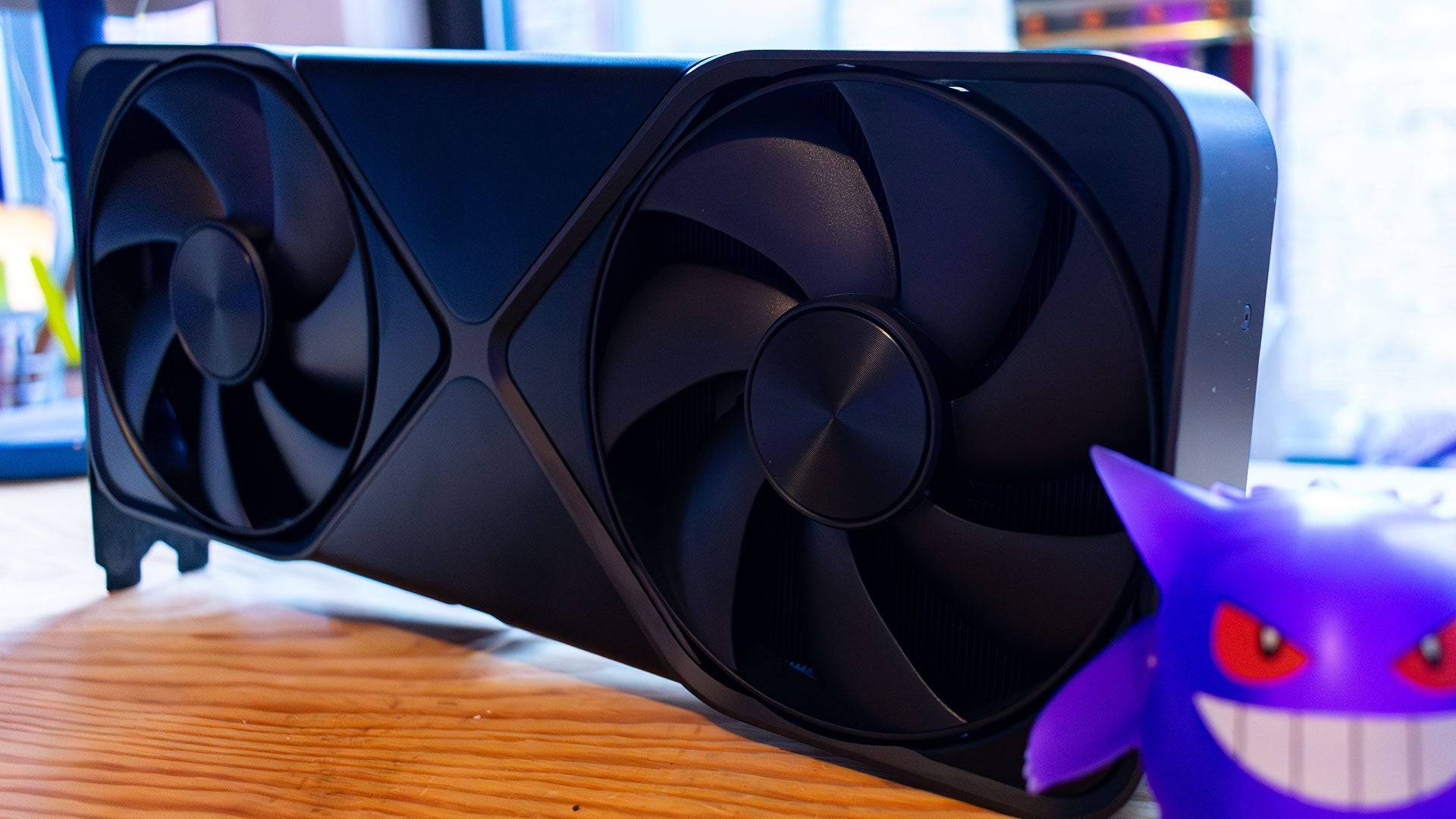


RTX 5090 – Specifications and Features
Built upon Nvidia's Blackwell architecture, already powering leading AI models, the RTX 5090 excels in AI-intensive tasks. However, traditional gaming performance wasn't overlooked. The card boasts a significant increase in CUDA cores (21,760 vs. 16,384 in the RTX 4090), resulting in a 32% boost in shader cores. Each SM retains four Tensor Cores and one RT Core, but the 5th-generation Tensor Cores enhance AI performance with FP4 support, reducing VRAM dependency.

The 32GB of GDDR7 VRAM represents a generational upgrade from the RTX 4090's GDDR6X, offering speed and efficiency improvements. Despite this, the card's power consumption (575W) is significantly higher than the RTX 4090, prioritizing performance over sheer efficiency.
The shift to a Transformer Neural Network (TNN) for DLSS, from a Convolutional Neural Network (CNN), promises enhanced image quality and reduced artifacts. Furthermore, Multi-Frame Generation, an evolution of DLSS 3's Frame Generation, generates multiple frames from each rendered image, drastically improving frame rates but requiring a solid base framerate for optimal results.
Purchasing Guide
The RTX 5090 launched January 30th, starting at $1,999 (Founders Edition). Third-party models will command higher prices.
The Founders Edition
Despite its 575W power draw, the Founders Edition surprisingly maintains a dual-slot form factor. While operating at high temperatures (up to 86°C under load), it avoids throttling. This compact design is achieved through a redesigned PCB placement and a dual-fan cooling system that efficiently expels heat.

The design aesthetic is consistent with previous generations, featuring a silver 'X' design and illuminated GeForce RTX logo. A new, angled 12V-2x6 power connector, included with a 4x 8-pin PCIe adapter, improves connectivity and security.

This compact design makes it suitable for smaller PC builds, unlike its predecessors. However, third-party versions are expected to be larger.
DLSS 4: Beyond "Fake Frames"
While Nvidia initially claimed up to 8x performance boosts, the actual gains vary. The RTX 5090 excels at high frame rates, primarily through AI-generated frames. DLSS 4's Multi-Frame Generation, powered by a new AI Management Processor (AMP) core, is 40% faster and 30% more memory-efficient than its predecessor. The AMP handles workload distribution, reducing latency through a Flip Metering algorithm.
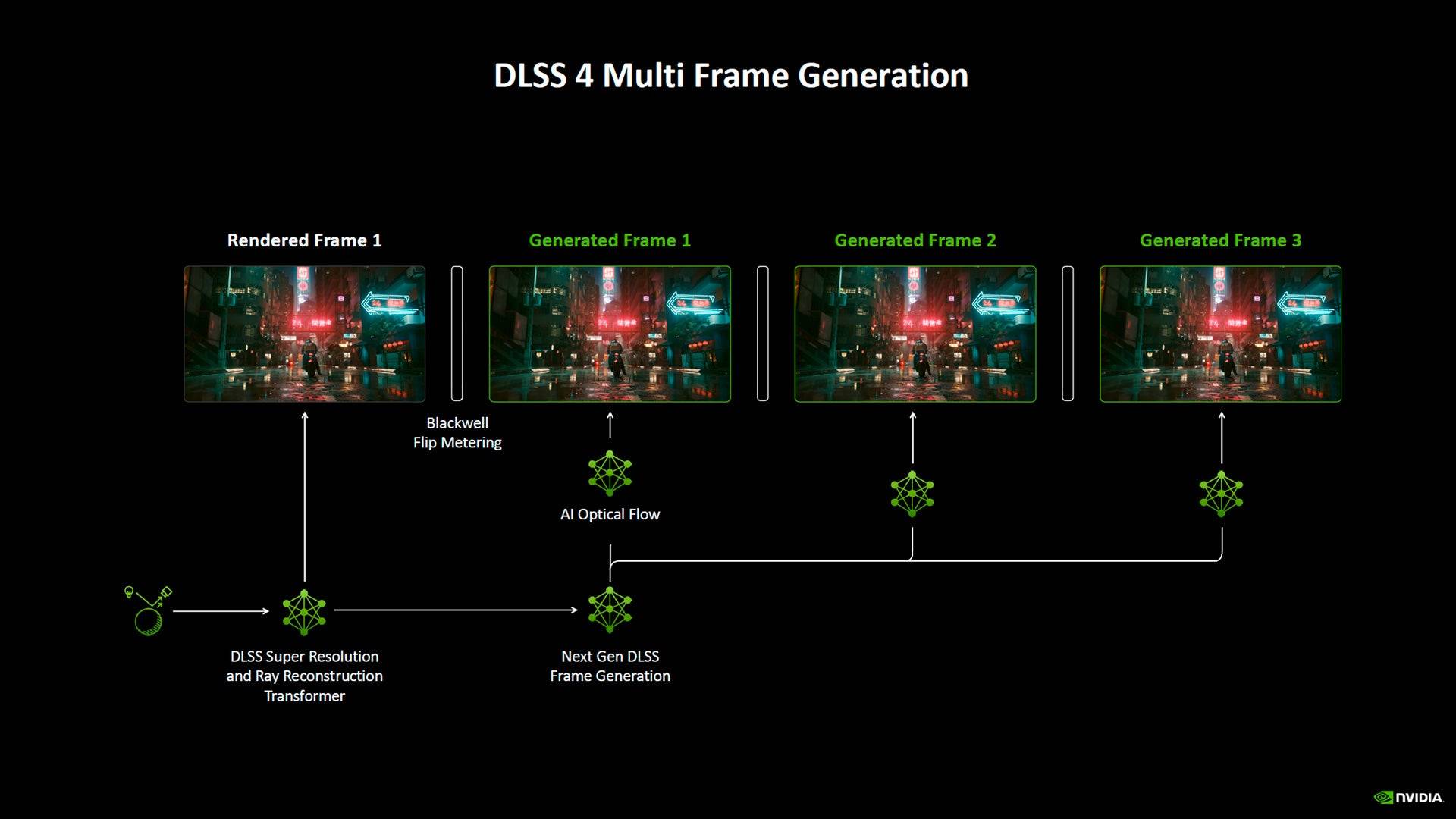
Multi-Frame Generation shines with high-end 4K displays and sufficient base frame rates (around 60fps without Frame Gen). While initial testing showed impressive results (e.g., 286fps in Cyberpunk 2077 at 4K with DLSS 4x frame generation), broader game compatibility remains to be seen. At launch, DLSS 4 support will extend to numerous games already compatible with DLSS 3 Frame Generation.

RTX 5090 – Performance Benchmarks
Testing revealed a generational leap in raw performance in 3DMark, but real-world gaming performance is more complex. In many games, even at 4K, the RTX 5090 is CPU-bottlenecked, even when paired with a high-end Ryzen 7 9800X3D processor. For many high-end GPU owners, the upgrade may not justify the cost.
Benchmarks (without DLSS 4):
- 3DMark: Up to 42% faster than RTX 4090.
- Call of Duty Black Ops 6 (4K): 10% faster than RTX 4090.
- Cyberpunk 2077 (4K, Ray Tracing Ultra): 10% faster than RTX 4090.
- Metro Exodus: Enhanced Edition (4K, Extreme): 25% faster than RTX 4090.
- Red Dead Redemption 2 (4K): 6% faster than RTX 4090.
- Total War: Warhammer 3 (4K): 35% faster than RTX 4090.
- Assassin's Creed Mirage (4K): Performance varied, potentially due to driver issues.
- Black Myth: Wukong (4K): 20% faster than RTX 4090.
- Forza Horizon 5 (4K): Negligible difference compared to RTX 4090.
Nvidia GeForce RTX 5090 – Benchmark Charts
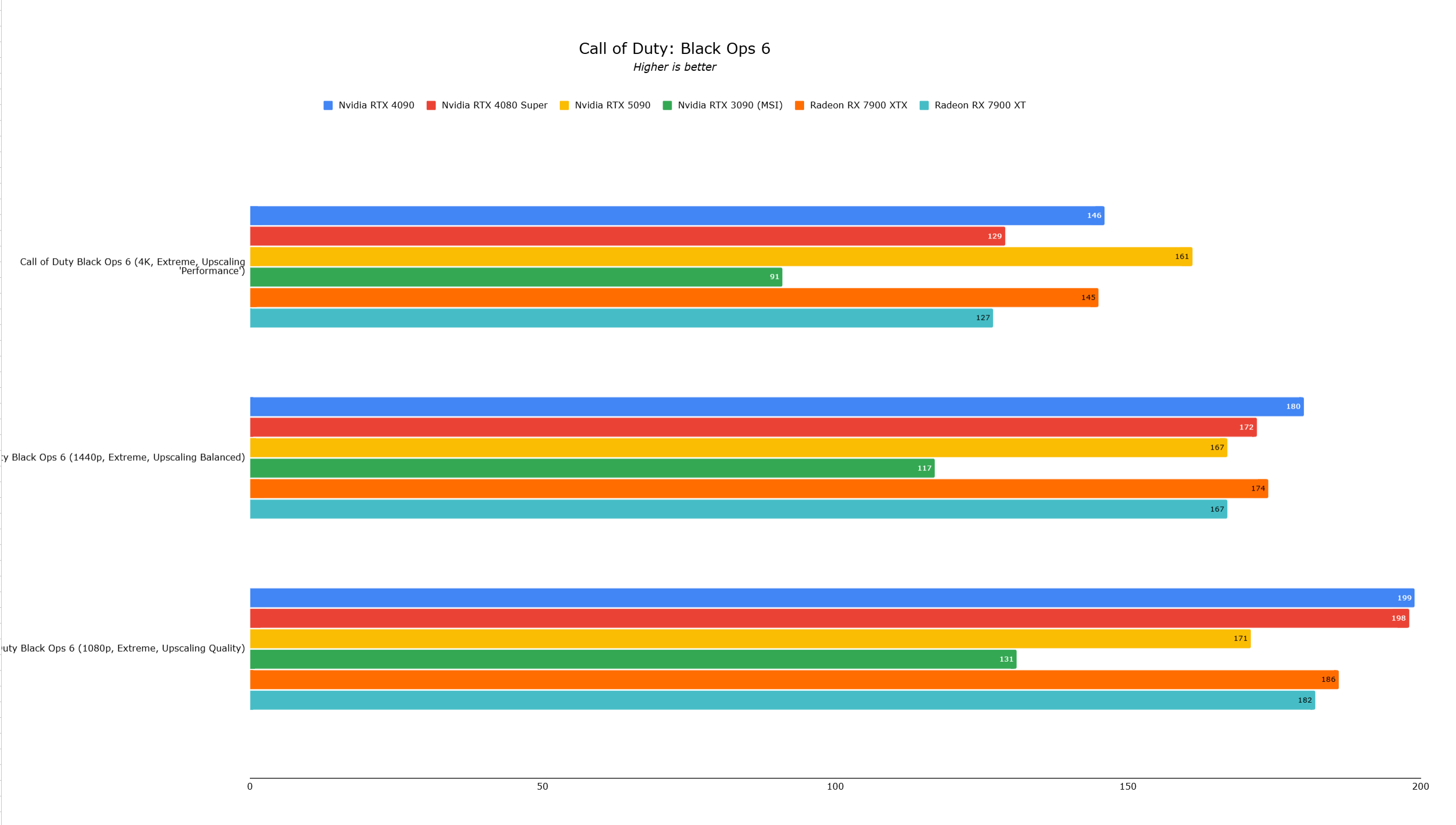
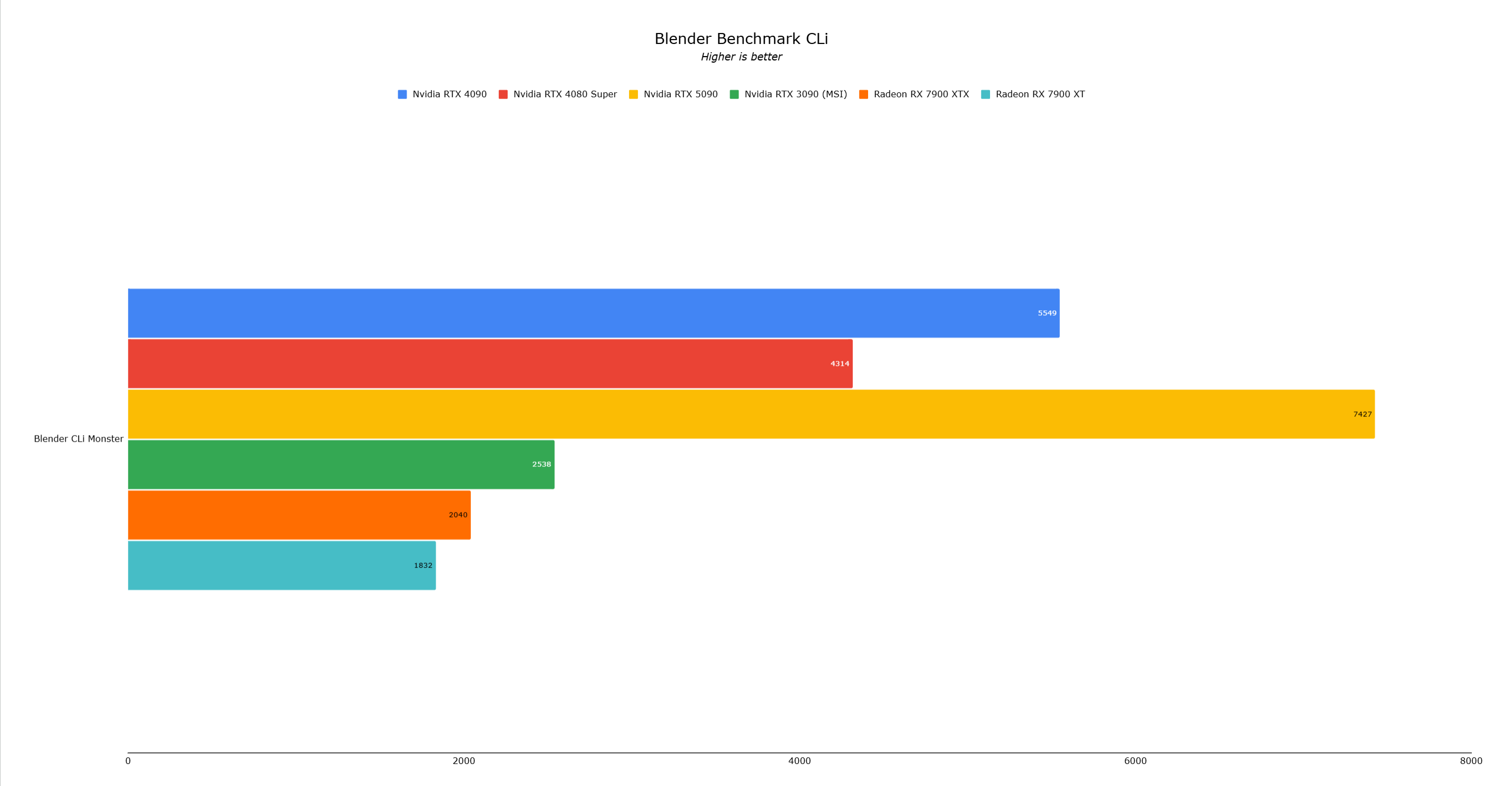 14 Images
14 Images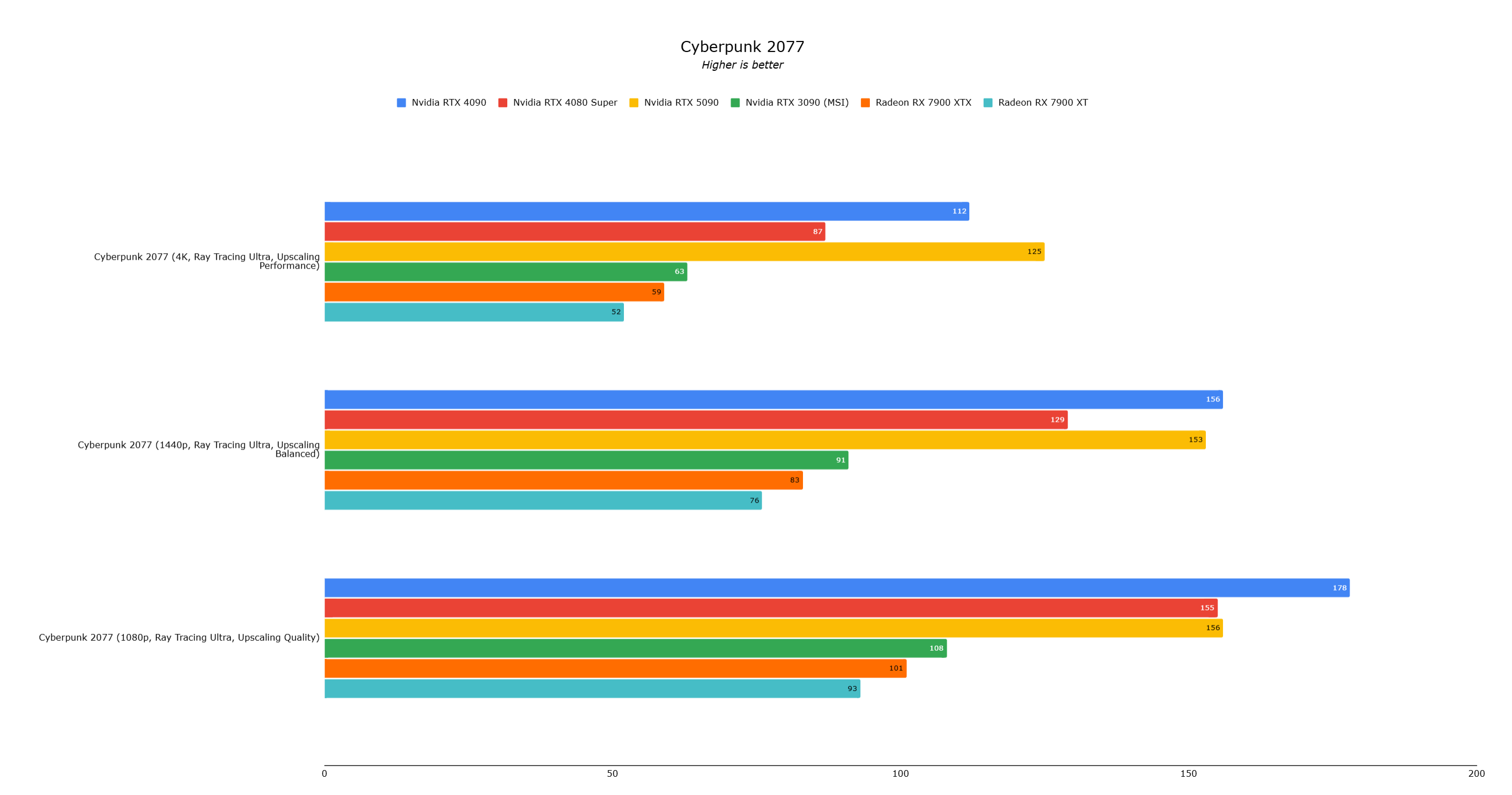

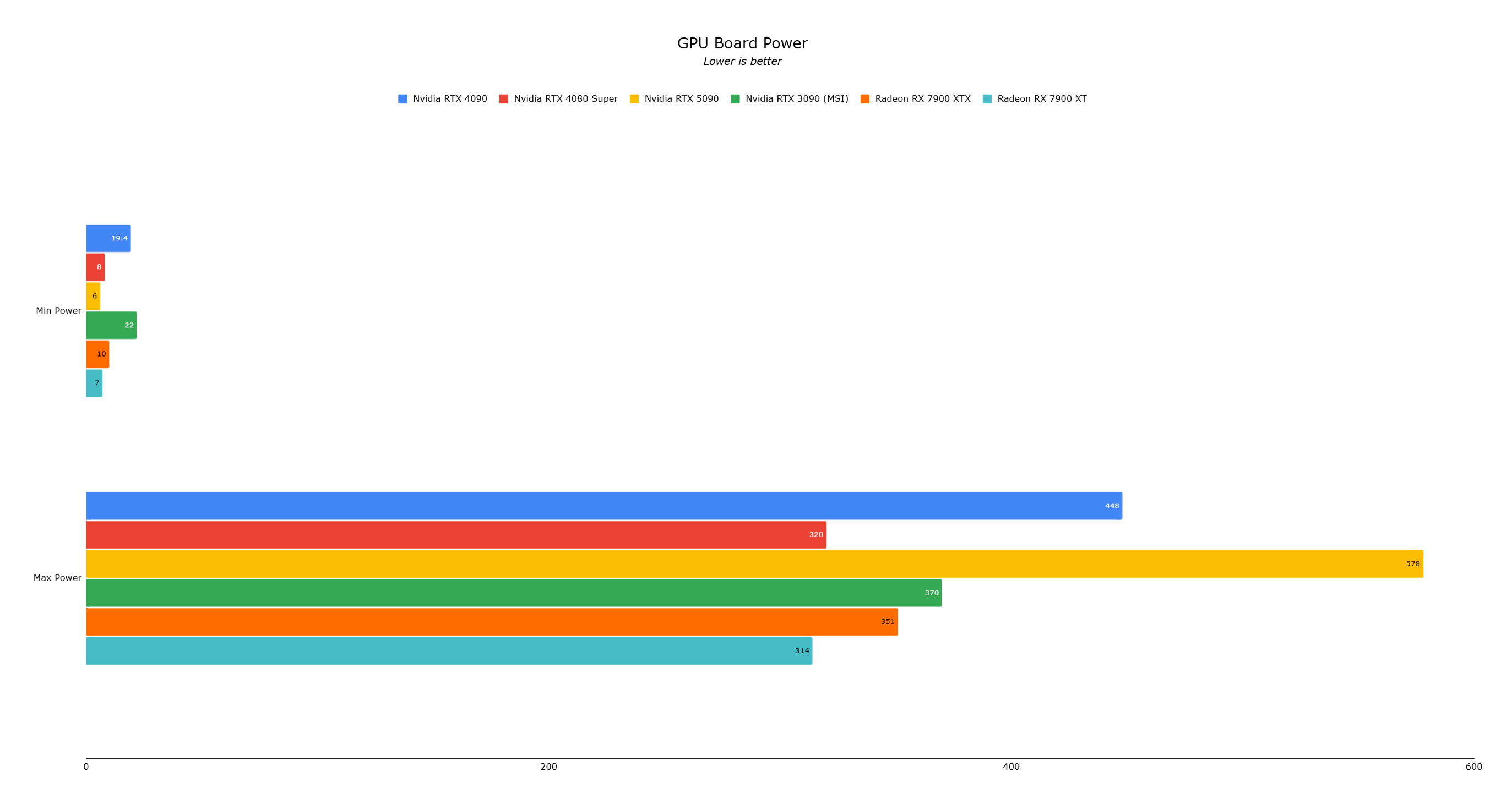

Conclusion
The RTX 5090 is undeniably the fastest consumer GPU, but its generational leap is primarily driven by DLSS 4's AI capabilities. While raw performance improvements exist, they are often limited by CPU bottlenecks in current games. The card's value proposition leans heavily towards future-proofing and embracing AI-enhanced gaming. For most users, the RTX 4090 remains a powerful and cost-effective option.
AnswerSee Results







